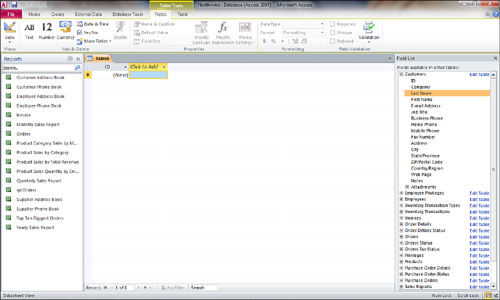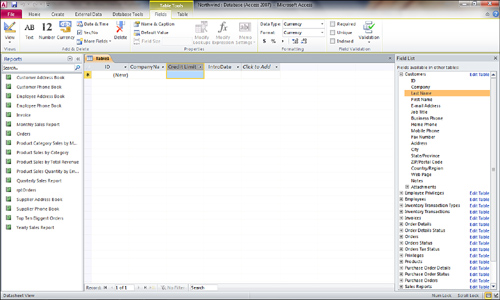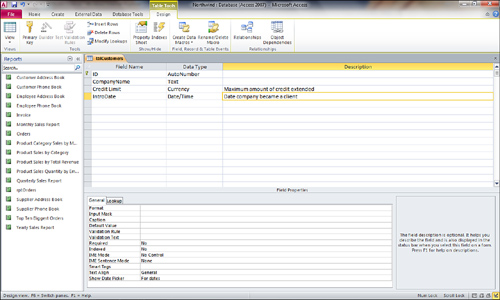You can add a new table to an Access 2010
database in several ways: You can design the table from scratch, build
the table from a datasheet (a
spreadsheet-like format), import the table from another source, or link
to an external table.
Regardless of which method you choose, you should
start building a new table by selecting the Create tab. The icons that
appear enable you to create a table in Design view or to create a table
by entering data (see Figure 1).

Building a Table from a Datasheet
Building a table from a datasheet was very limited
in earlier versions of Access. With Access 2010, you can do quite a bit
while in Datasheet view. To use the datasheet method, follow these
steps:
1. | Select the Create tab on the Ribbon.
|
2. | Click the Table button from the Tables group. A new datasheet appears, ready for you to design your table (see Figure 2).

|
3. | Click to add a column. A drop-down appears with a list of the available field types (see Figure 3). Select the appropriate field type from the list.

|
4. | Enter
a name for the field. Press Enter. The focus appears on the next field.
At any time, you can refine the properties associated with a field. You
accomplish the task with the buttons on the Fields tab of the Ribbon.
For example, you can designate a field as Required or Unique (see Figure 4).

|
5. | After
you have added all the columns and data you want, click the Save button
on the QuickAccess toolbar. Access prompts you for a table name. Enter
a table name and click OK.
|
6. | After the save operation is complete, click the View button on the Ribbon to look at the design of the resulting table.
|
7. | If
you’d like, you can add a description to each field to help make the
table self-documenting. Your table design should look something like Figure 5.

|
Adding descriptions to table, query, form,
report, macro, and module objects goes a long way toward making an
application self-documenting. Such documentation helps you, or anyone
who modifies an application, perform any required maintenance on the
application’s objects.